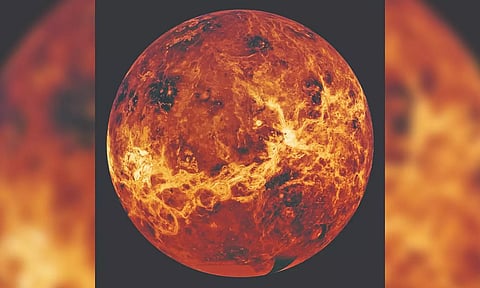

NEW YORK: On December 21, or Thursday this year, the sun hugged the horizon. For those of us in the Northern Hemisphere, it barely seemed to rise — hardly peeking above a city’s skyline or a forest’s snow-covered evergreens — before it swiftly set. For months, the orb’s arc across the sky has been slumping, shortening each day.
In New York City, for example, the sun will be in the sky for just over nine hours — roughly six hours less than in June at the summer solstice. The winter solstice marks the shortest day of the year before the sun reverses course and climbs higher into the sky. (At the same time, places like Australia in the Southern Hemisphere mark the summer solstice, the longest day of the year.)
This is a good opportunity to imagine what such a day might look like if we had evolved on another planet where the sun would take a different dance across the sky. You might want to feel thankful for the solstices and seasons we do have, or we might not be here to witness them at all. The solstices occur because most planets do not spin upright, or perpendicular to their orbits.
The Earth, for example, slouches 23.5 degrees on a tilted axis. This leaves the planet’s North Pole pointed toward the North Star over relatively long periods of time, even as Earth makes its yearlong migration around the sun. That means the Northern Hemisphere will spend half the year tilted slightly toward the sun, bathing in direct sunlight during summer’s long, blissful days, and half the year cooling off as it leans slightly away from the sun during winter’s short, frigid days. Dec. 21 marks the day when the North Pole is most tilted away from the sun.
The axial tilt of Venus, for example, is so extreme — 177 degrees — that the planet is essentially flipped upside down with its South Pole pointing up. Perhaps counter-intuitively, that means that there’s very little tilt to its upside-down spin, and its hemispheres will never dramatically point toward or away from the sun. As such, the sun’s dance across the sky will remain relatively stable — shifting by a mere six degrees over the course of a Venusian year.
Had we evolved on Venus, it’s likely that we would not have noticed solstices or seasons at all, said David Grinspoon, an astrobiologist at the Planetary Science Institute. The same can’t be said for imaginary aliens living within Uranus’s chilly blue clouds. “Uranus is wild,” Dr. Grinspoon said.
An axial tilt of 98 degrees causes the ice giant to spin on its side. So, whereas one of Earth’s poles leans slightly toward the sun at the solstice, one of Uranus’s poles points almost directly toward the sun at solstice — as though poised to make a perfect bullseye. That means that one hemisphere will bask under the sun both day and night, while the other will experience a frigid and dark winter and not catch a glimpse of the sun for that entire season.
“It really can’t get any more extreme than that,” said Heidi Hammel, a planetary scientist at the Planetary Society.
Such a tilt on Earth would mean that the Arctic Circle didn’t begin 66 degrees north of the Equator, but at the Equator itself. All of North America, Europe, Asia and half of Africa would spend winters in permanent darkness and summers under constant sunlight. And on Uranus, which takes 84 Earth years to orbit the sun, these seasons last for decades.